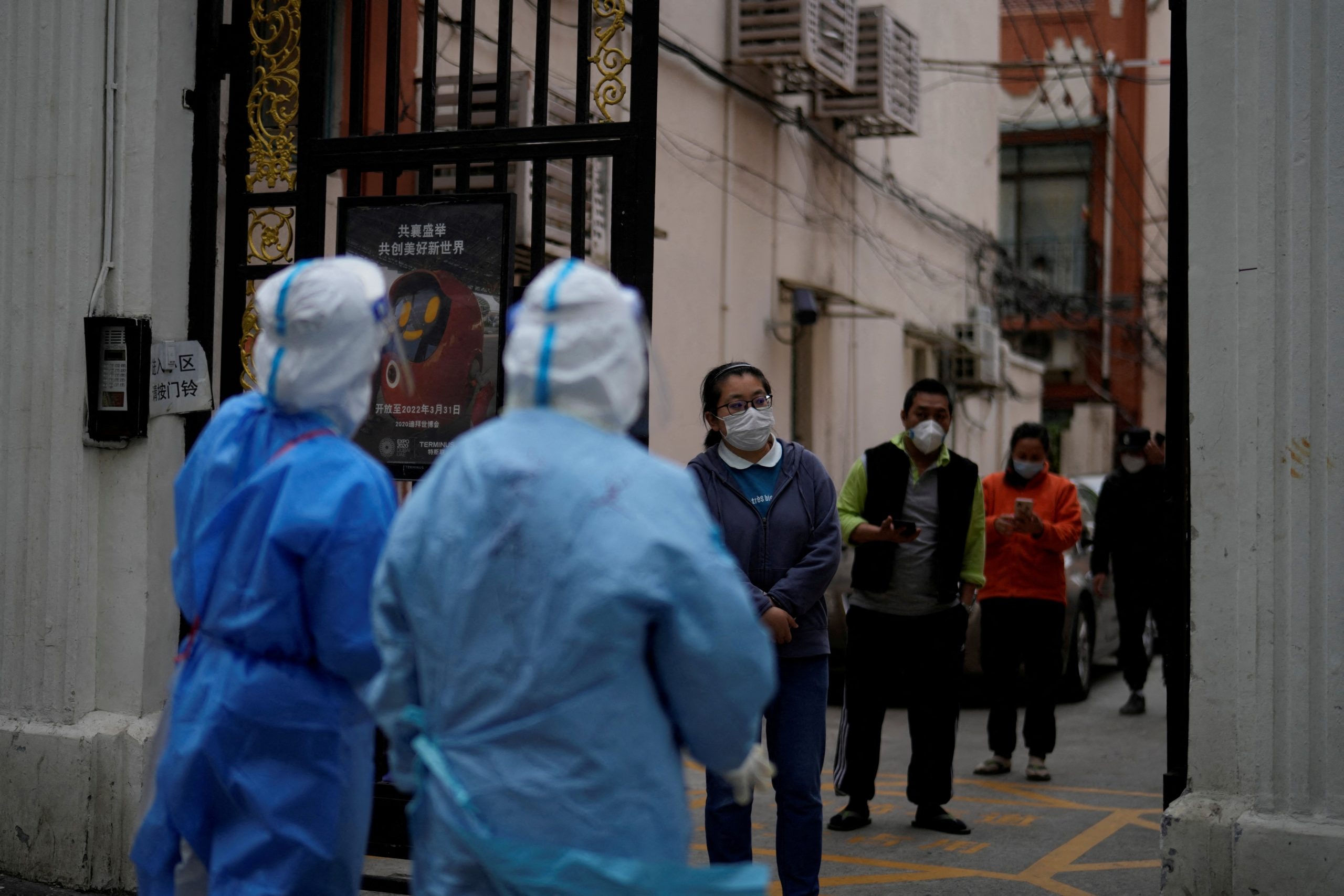
[elfsight_social_share_buttons id=”1″]
Shanghai has set a target to stop the spread of COVID-19 outside of quarantined areas by Wednesday, two people familiar with the matter said, which would allow the city to further ease its lockdown and start returning to normal life as public frustrations grow.
The target will require officials to accelerate COVID testing and the transfer of positive cases to quarantine centers, according to a speech by a local Communist Party official dated Saturday, a copy of which was seen by Reuters.
Ending community-level transmission has been a turning point for other Chinese localities that locked down, such as Shenzhen city which last month reopened public transport and let businesses go back to work shortly after achieving that target.
Shanghai has become the epicenter of China‘s largest outbreak since the virus was first identified in Wuhan in late 2019, and has recorded more than 320,000 COVID infections since early March when its surge began.
Frustrated Shanghai residents have taken to social media to vent their anger at local authorities over difficulties sourcing food, lost income, separated families, and poor conditions at central quarantine centers. Tensions have on occasion erupted into public protests or scuffles with police.
The Chinese economy and global supply chains are also feeling pinched by shuttered factories and transport bottlenecks in many parts of China hit by COVID-19 curbs.
Shanghai has already taken piecemeal steps to ease restrictions. State TV reported on Sunday that some supermarkets had reopened their doors to shoppers, although many residents expressed disbelief in social media postings. A Shanghai government-backed social media account said it was in one district in the outskirts.
Turning point
Shanghai’s new target of “zero-COVID at the community level” by April 20 was communicated in recent days to the city’s Communist Party cadres and organizations such as schools, according to the sources, who declined to be named as the information was not public.
China‘s definition of zero-COVID status at the community level means that no new cases emerge outside quarantined areas.
A speech dated Saturday by the party secretary of the city’s Baoshan district described it as an order that had come as the city’s situation reached a “critical moment”, with growing public anxiety and food supply pressures.
“The State Council Working Group, the municipal party committee, and municipal government have asked that the turning point of the epidemic should appear on the 17th and that zero-COVID status should be reached on the 20th”, Chen Jie said in the speech.
“This is a military order, there is no room for bargaining, we can only grit our teeth and fight for victory. It can also be said this is a total attack, a last-ditch battle to reverse the trend of the epidemic,” the speech said.
One Shanghai resident told Reuters her neighborhood committee sent out a notice on Sunday to residents that more workers and buses had been mobilized to speed up the transfer of positive cases in their compound to quarantine centers.
Images and videos circulated on Chinese social media on Saturday evening showed numerous buses lined up to take away long lines of people who users said had tested positive for COVID outside a town in Shanghai’s eastern Pudong district. Reuters was unable to verify the authenticity of the posts.
Of 23,643 new local infections Shanghai reported for Saturday, 722 were found outside quarantined areas, according to Wu Jinglei, director of Shanghai’s health commission. He told a news conference on Sunday that the figure had declined in the past two days.
Businesses reopening
China‘s “dynamic clearance” approach to COVID control requires authorities to centrally quarantine all cases and isolate their close contacts.
Beijing authorities intervened in Shanghai in early April, after the financial hub failed to isolate COVID-19 despite locking the city down in stages. Chinese President Xi Jinping has insisted that China must not relax coronavirus measures, and must stick to an elimination approach.
Shanghai started locking down areas east of the Huangpu river on March 28 and extended the lockdown citywide on April 1. While it eased movement curbs on some residents last week, most businesses remain shut and public transport is suspended.
Business leaders have been increasingly outspoken about the toll of the lockdowns on the Chinese economy, with automakers warning they could be forced to stop production completely if their suppliers in Shanghai and neighboring areas could not resume work soon.
On Friday, China‘s industry regulator said it had identified 666 companies in Shanghai in the semiconductor, automobile, and medical sectors as priority firms that needed to resume work.
Late on Saturday, Shanghai authorities provided guidance on what measures firms should take to restart production in the city, such as stocking up on medical supplies and submitting COVID prevention plans for their factories.
Reuters has reported that Tesla is preparing to reopen its Shanghai factory on April 18.
SAIC Motor Corp, the Chinese partner of Volkswagen and General Motors, has said it is preparing to resume production and will start carrying out “stress tests” on Monday.
